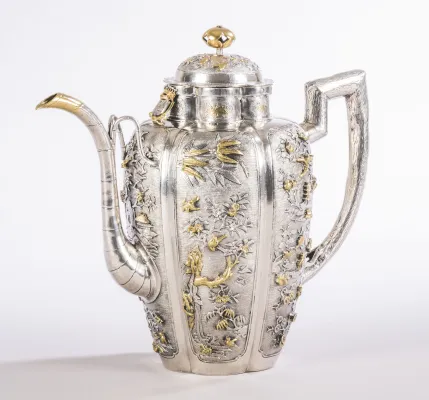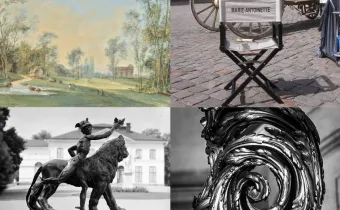The exhibition
Louis XIV, the initiator
The exhibition illustrates the diplomatic policy initiated by Louis XIV to reach out to his contemporary Emperor Kangxi, which was notably characterized by the despatch of French Jesuit fathers to China in 1685, who were admitted to the court in Peking as the King’s mathematicians. This initiative enabled the two countries to forge a relationship based on trust and mutual respect that is often overlooked, and which lasted until the end of the 18th century. This special diplomatic situation and mutual interest prepared the ground for the birth of modern Sinology in France.
A fashion which flourished
At the French court, the appeal of China and Chinese art manifested itself in various ways via four main phenomena: importing Chinese objets d’art ; modifying some types of imported works, notably by adding gilt-bronze mounts to porcelain items, or using lacquered panels on pieces of French furniture; imitating Chinese products, for example by engaging in a frantic race to discover the secret of making porcelain using kaolin; and responding to the powerful influence exerted by Chinese art on French art, especially in the field of the decorative arts.
The exhibition demonstrate how Chinese art offered French artists and intellectuels a boundless source of inspiration in the fields of painting, objets d’art, interior decor, architecture, garden design, literature, music, and the sciences.
The works assembled in Beijing also demonstrate more broadly the genuine fascination of the court of Versailles and major French collectors for all things Chinese.
The exhibition also reveal 17th and 18th century Chinese emperors’ acute interest in French scientific knowledge and know-how.
A ground-breaking collaboration and an enhanced exhibition
An initial exhibition was held at the Palace of Versailles in 2014 to mark the fiftieth anniversary of the establishment of diplomatic relationships between France and China. The 2024 exhibition in the Forbidden City will be more extensive, thus making it possible to display prestigious acquisitions made by the Palace of Versailles in the last decade. A novel feature of this new exhibition is that it also sets works from Chinese and French collections in counterpoint. This dialogue will reflect the interest which the two countries share for each others’ cultures.
Furthermore, scientific collaboration between the teams at Versailles and the Palace Museum has led to the rediscovery of objects which have not previously been exhibited, and has fostered a better understanding of this early history.
exhibtion curators
- Marie-Laure de Rochebrune, Curator at the Palace of Versailles, with curatorial assistance from art historian Dr Vincent Bastien.
- Guo Fuxiang, Curator at the Palace Museum.
An exhibition in partnership with the Palace Museum.
An exceptional tour
The orchestra of the Royal Opera of the Palace of Versailles performed the inaugural concert for the exhibition in the Forbidden City. This exceptional performance will be followed by a 13-city tour of Asia with conductor Stefan Plewniak at the helm, featuring over 20 artists who will be performing there for the first time.





